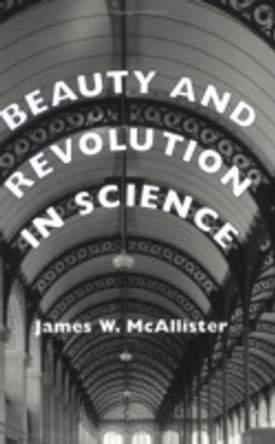Description
Explaining why he embraced the theory of relativity, the Nobel Prize-winning theoretical physicist P. A. M. Dirac stated, "It is the essential beauty of the theory which I feel is the real reason for believing in it." How reasonable and rational can science be when its practitioners speak of "revolutions" in their thinking and extol certain theories for their "beauty"? James W. McAllister addresses this question with the first systematic study of the aesthetic evaluations that scientists pass on their theories.Using a wealth of other examples, McAllister explains how scientists' aesthetic preferences are influenced by the empirical track record of theories, describes the origin and development of aesthetic styles of theorizing, and reconsiders whether simplicity is an empirical or an aesthetic virtue of theories. McAllister then advances an innovative model of scientific revolutions, in opposition to that of Thomas S. Kuhn.Three detailed studies demonstrate the interconnection of empirical performance, beauty, and revolution. One examines the impact of new construction materials on the history of architecture. Another reexamines the transition from the Ptolemaic system to Kepler's theory in planetary astronomy, and the third documents the rise of relativity and quantum theory in the twentieth century.
A "Choice" magazine "Outstanding Academic Book for 1997" and an Alternate Selection of the Library of Science Book Club.
About the Author
James W. McAllister is University Lecturer in the Faculty of Philosophy at the University of Leiden.
Reviews
A valuable, important, persuasively argued book. Highly recommended.
* Choice *This is a great book. It clearly and concisely does what it sets out to do: it examines the basic philosophical and sociological theories of the role of aesthetics in science, it identifies the critical assumptions and contradictions that differentiate these views, and it provides a carefully reasoned, well-documented and novel approach to the issues. Best of all, the book is eminently readable. Anyone interested in the bases of scientific controversies, the nature of scientific revolutions, or the similarities and differences between the sciences and the arts should definitely read McAllister's book. It may prove to be as fundamental as Thomas S. Kuhn's Structure of Scientific Revolutions.
* American Scientist *Awards
Winner of A 1997 Choice Magazine "Outstanding Academic Title.
Book Information
ISBN 9780801486258
Author James W. McAllister
Format Paperback
Page Count 240
Imprint Cornell University Press
Publisher Cornell University Press
Weight(grams) 454g
Dimensions(mm) 229mm * 152mm * 18mm










